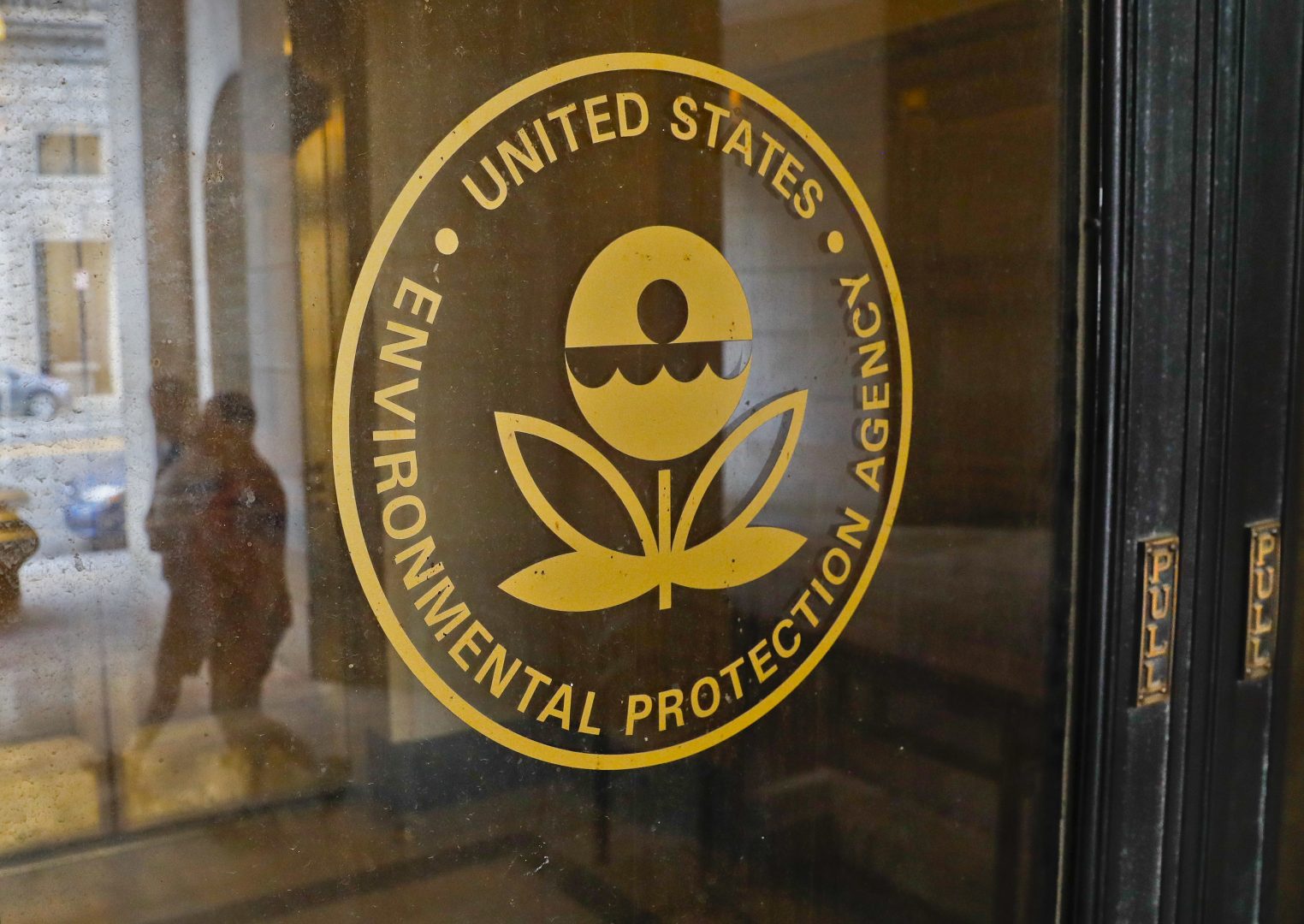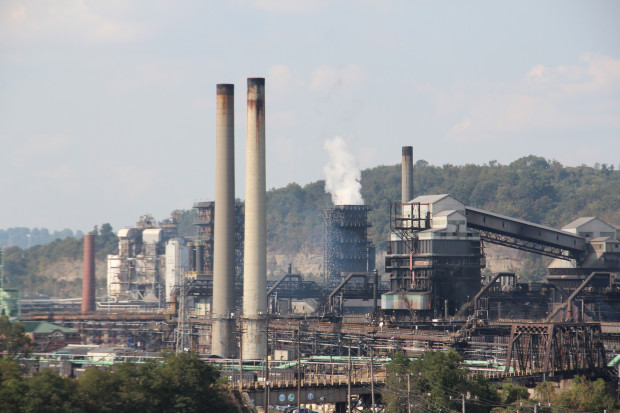
File photo: The Environmental Protection Agency.
AP Photo/Pablo Martinez Monsivais


File photo: The Environmental Protection Agency.
AP Photo/Pablo Martinez Monsivais

AP Photo/Pablo Martinez Monsivais
File photo: The Environmental Protection Agency.

Reid R. Frazier / StateImpact Pennsylvania
Clairton Coke Works, near Pittsburgh. Photo: Reid R. Frazier” credit=”
Pennsylvania is one of more than a dozen states suing the EPA for failing to enforce on an important air pollution regulation.
In a federal lawsuit filed Monday, Pennsylvania and 13 other states, plus the District of Columbia, say the EPA blew by an October 1 deadline to designate which parts of the country are failing to meet recently tightened federal standards for ozone, or ground level smog.
States use those designations to issue regulations on the amount of pollution that power plants, cars and factories can produce within their borders.
By not meeting the October 1 deadline, the agency was putting public health at risk, public health advocates said.
“The way it’s set up now, it’s going to further delay the actual beginning of the cleanup process for many of these communities, because they can’t start the planning until they know what areas are (over the EPA limit),” said Janice Nolen, Assistant Vice President of National Policy at the American Lung Association, one of several groups also suing the agency over the deadline. “The people of Pennsylvania are going to have to breathe higher ozone, longer than they need to.”
In 2015, EPA lowered its standard for ozone from 75 to 70 parts per billion (ppb). The agency had two years to determine which areas met that designation, and which didn’t.
The Pennsylvania Department of Environmental Protection sent the EPA a list of counties that failed the standard. They include five Philadelphia-area counties, plus Berks and Lebanon counties. Several counties in the Pittsburgh area, including Allegheny County, scored out at 70 parts per billion, just in the attainment zone.
The DEP, through a spokesman, declined comment.
Kevin Sunday of the Pennsylvania Chamber of Business and Industry said the EPA’s schedule is too tight for a regulation as complicated as ozone. It took the EPA until 2015 to come up with regulations to meet its 2008 standard. He says instead of reviewing its standards every five years, as is currently the case, the EPA should review rules every 10 years.
“These are very complicated and difficult regulatory issues, and in general we think more time to implement them helps everybody,” he said.
Ozone is formed when industrial emissions in the air are exposed to sunlight. It can exacerbate asthma and cause lung disease, according to the EPA.
In August, the EPA proposed delaying its ozone designations for a year, but backed away after Pennsylvania and the 14 other states sued.
“The EPA must follow the law to protect our environment and millions of people’s health,” Attorney General Josh Shapiro said at the time.
In November, EPA issued a list of areas that were in attainment of the new rule, but not those that failed it. Enesta Jones, an EPA spokesperson, said in an email that it would address the areas that aren’t in attainment “in separate future actions.”
StateImpact Pennsylvania is a collaboration among WITF, WHYY, and the Allegheny Front. Reporters Reid Frazier, Rachel McDevitt and Susan Phillips cover the commonwealth’s energy economy. Read their reports on this site, and hear them on public radio stations across Pennsylvania.
(listed by story count)
StateImpact Pennsylvania is a collaboration among WITF, WHYY, and the Allegheny Front. Reporters Reid Frazier, Rachel McDevitt and Susan Phillips cover the commonwealth’s energy economy. Read their reports on this site, and hear them on public radio stations across Pennsylvania.
Climate Solutions, a collaboration of news organizations, educational institutions and a theater company, uses engagement, education and storytelling to help central Pennsylvanians toward climate change literacy, resilience and adaptation. Our work will amplify how people are finding solutions to the challenges presented by a warming world.